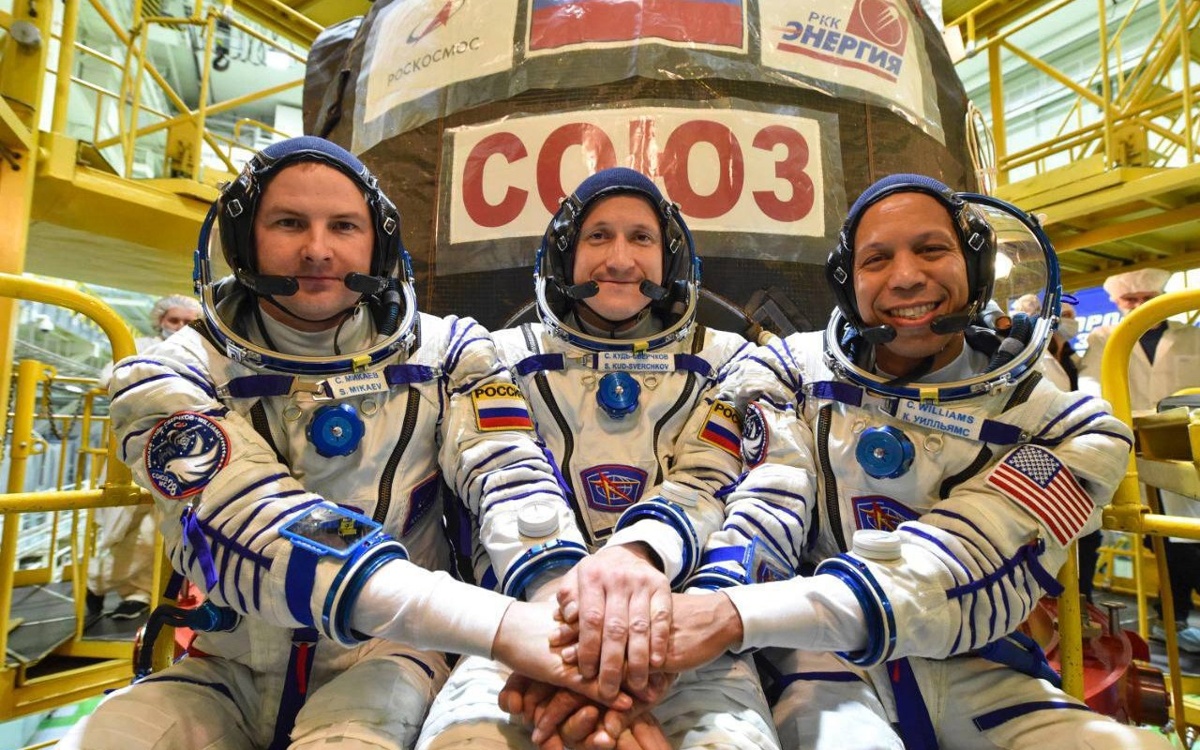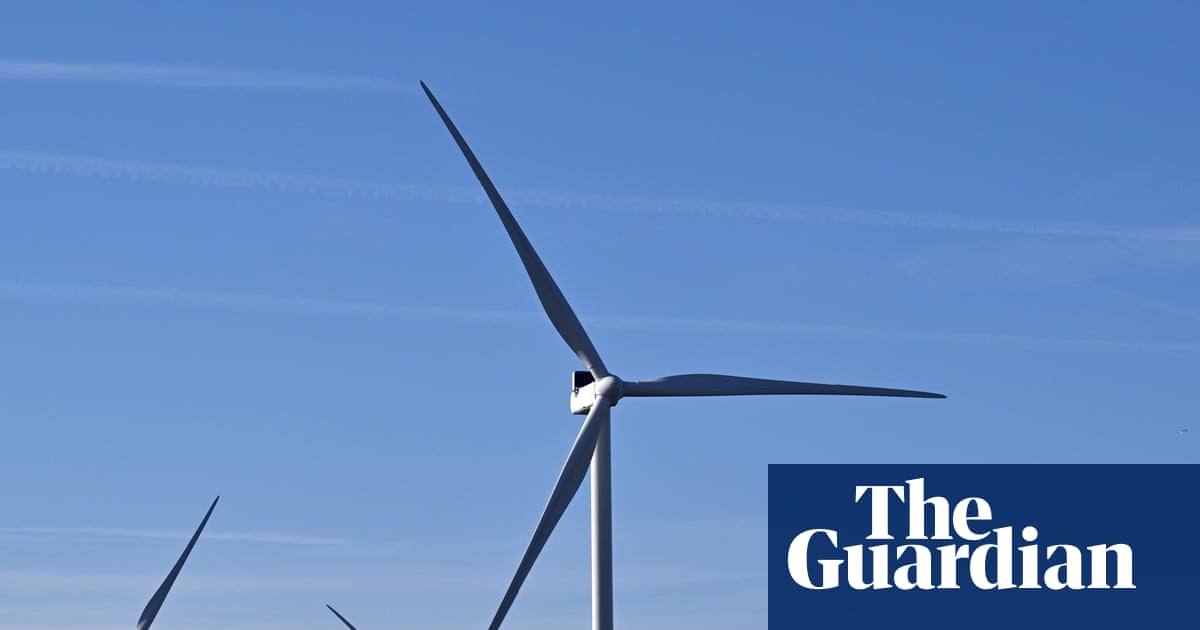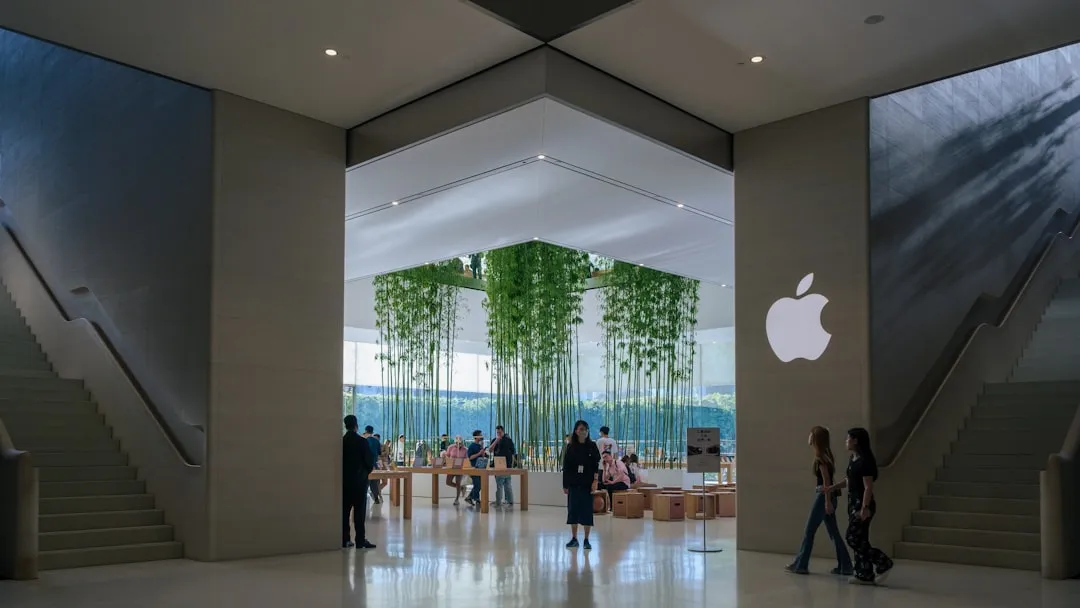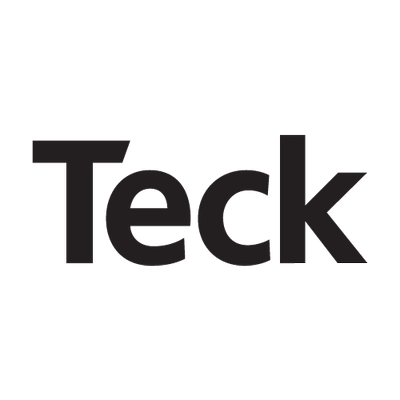Roscosmos cosmonauts Sergey Kud-Sverchkov (Soyuz MS-28 spacecraft commander) and Sergey Mikayev (flight engineer 1), as well as NASA astronaut Christopher Williams (flight engineer 2).
Roscosmos astronauts Pyotr Dubrov, Anna…

Roscosmos cosmonauts Sergey Kud-Sverchkov (Soyuz MS-28 spacecraft commander) and Sergey Mikayev (flight engineer 1), as well as NASA astronaut Christopher Williams (flight engineer 2).
Roscosmos astronauts Pyotr Dubrov, Anna…

The latest inflation figures showed a jump in the growth of average prices from 3.6% to 3.8%. But they also indicate just how much our economy is caught up in the ramifications of Russia’s illegal invasion of Ukraine, which sent gas prices higher – and with it our electricity prices.
The October consumer price index figures were a turning point for data in Australia. It marks the change of the official CPI figures going from quarterly to monthly. This is pretty much the biggest data shift since the labour force figures back in 1978 did the same switch from quarterly to monthly.
The move is a good one, given most nations in the OECD measure prices monthly. It gives the Reserve Bank and the government more regular information.
For a number of years, the Australian Bureau of Statistics had been testing measuring inflation monthly, but it left out a few things while it worked out how to count everything. As a result, the latest figures are slightly different from the old monthly figures:
If the graph does not display click here
On the old measure, inflation was slightly lower than the new official measure.
This is also reflected with the “trimmed mean” measure of underlying inflation. While the old monthly figures suggested underlying inflation was below 3%, the new official figures have it at 3.3%
If the graph does not display click here
The underlying inflation measure will probably take on more importance now that the official measure has moved to a monthly survey. The overall CPI figures will now be rather more noisy than they were when they involved an average of three months.
You can see how this affects things when you look at the monthly growth since April 2024 (which is how far back the official monthly data goes). Rather oddly, despite the annual inflation figure rising in October, in October itself inflation did not rise at all:
If the graph does not display click here
This weirdness is even more stark when we look at the biggest drivers of inflation:
If the graph does not display click here
Electricity was the biggest driver of inflation over the past year, but in October electricity prices fell 10.2%.
This confusion is due to the interaction of electricity rebates and inflation.
In July 2023, the Albanese government introduced rebates to protect against the increase in prices due to the Russian invasion of Ukraine. In July 2024, the states began to get involved as well. And October last year saw the largest impact of the federal and state government rebates on electricity prices:
If the graph does not display click here
But these rebates did not last, and over the past 12 months they have begun to be unwound – and so prices began to rise. Then in August they were extended across a number of areas – and so electricity prices fell again.
But they remain well above where they were in October last year.
Importantly, inflation is the growth of prices from one month to the next, and from one month to the same month the following year. So purely because last October was the month where the energy rebates had the biggest impact, the annual growth in electricity prices since then looks massive.
Were the government rebates not put in place, electricity costs would be about 31% higher now, but the growth (or inflation) of electricity costs would be lower.
But then the question is: why were these rebates needed, and what the heck does it have to do with Putin invading Ukraine?
The problem for Australia is that since the opening of the Gladstone LNG terminal, gas prices on the eastern seaboard have been linked with the world price of gas. Because Russia is a major producer of gas, its invasion of Ukraine and subsequent sanctions of Russian gas and other trade sent world gas prices soaring – doubling from January 2022 to September that year.
Gas is a significant generator of Australia’s electricity, but it is also among the most expensive. However, the way the national energy market operates is that the most expensive source for electricity determines the price at any point in time.
When renewables are able to supply 100% of our electricity, they will determine the cost and prices will be much lower. But because gas often sets the prices (because gas-generated electricity is needed to meet demand), that means there is a very strong link between gas prices and electricity:
If the graph does not display click here
Without the energy rebates, electricity prices would have followed gas prices up, and the hit to households would have been much greater.
On the other side of the coin, the boom in gas prices has led to gas companies making out like bandits.
The value of gas exports from Australia is nearly four times what it was a decade ago. Alas this massive windfall gain for gas companies has not led to a windfall in revenue of the government in the form of the petroleum resource rent tax – if anything, revenue has fallen:
If the graph does not display click here
These latest inflation figures will give few people any joy – not the RBA, nor the government, nor any of us looking at our bills. But they will continue to give comfort to energy and gas producers who know their windfall profits will remain largely untouched by Australia’s tax system.

Supporters of Make America Healthy Again (MAHA) say the movement is improving the U.S….

Australia’s greenhouse gas emissions fell 2.2% last financial year, in what the Albanese government says is the largest annual drop due to reduced fossil fuel use outside the Covid-19 pandemic.
About half of the 9.9m tonnes reduction was due to an increase in solar and wind generation pushing coal-fired power out of the system, according to new government data to be released on Thursday.
Pollution from power generation dropped 3.3%, or 5m tonnes, as the proportion of electricity from renewable energy across the year reached more than 40%. It reversed a brief rise in climate pollution from the power sector in the previous year.
Sign up to get climate and environment editor Adam Morton’s Clear Air column as a free newsletter
There were smaller emissions reductions from underground coalmines, heavy industry, farming and households burning gas for heating and cooking.
But pollution from transport continued to increase due to greater use of diesel-power vehicles and more people taking domestic flights.
The climate change and energy minister, Chris Bowen, was expected to use an annual climate statement to parliament on Thursday to argue the data showed Labor’s policies since its election in 2022 were having an impact on the amount of carbon dioxide pumped into the atmosphere.
The Coalition and the Greens have argued otherwise: that pollution had either increased under Labor or was flatlining.
Assessing the true picture has been difficult due to the impact of Covid-19 shutdowns, which resulted in a sharp artificial drop in the two years before Albanese came to office, and led to a rebound once restrictions were lifted.
It is unlikely the drop in emissions will be enough to put Australia on track to meet its climate targets.
According to the latest data, annual emissions to June were 437.5m tonnes – 28.5% below 2005 levels.
after newsletter promotion
It is expected that an emissions projection report, also to be released on Thursday, will estimate the government’s policies will leave it short but still within reach of where it needs to be to meet its 2030 emissions reduction target – a 43% cut compared with 2005 levels.
The Climate Change Authority last year estimated reaching the target would require emissions to be cut by 15m tonnes a year over the next five years.
The projections report will show the government is much further behind meeting its recently announced 2035 target – a cut of between 62% and 70% below 2005 levels.
It means Labor will need to revamp existing policies and introduce new measures to get to even the bottom end of this commitment.
In a statement on the emissions data, Bowen said the government’s policies, including a renewable energy underwriting program and a home battery subsidy, meant the government was on track to reduce energy bills and meet its climate targets “if we stay the course and continue to lift our efforts”. He said renewable energy provided more than half the electricity in the national grid in October.
The reports released on Thursday do not include the emissions that result overseas from Australian coal and gas exports. A 2024 analysis found Australia ranked second behind only Russia for exported emissions.

Apple’s been playing catch-up in the smart home game for years, watching Amazon and Google dominate with their Echo Shows and Nest Hubs. But here’s the thing – all the pieces are finally falling into place for Cupertino to create something…


Prime Video has launched AI-powered video season recaps in a beta version for select English-language Prime Original series in the U.S., a move that Amazon is calling a first of its kind application of generative AI.
The video recaps build upon…

Good luck trying to hunt down any evidence of Apple TV’s series The Hunt.
Next month’s premiere of The Hunt (Traqués), a French thriller series for Apple TV, has been pulled from the streamer’s schedule amid plagiarism accusations….

Recommendations Highlight Significant Benefits and Value Creation Opportunity
for Teck Shareholders
Teck’s Board of Directors Unanimously Recommends Teck Shareholders
Vote “FOR” the Merger TODAY
Vancouver, B.C. – November 26, 2025 – Teck Resources Limited (TSX: TECK.A and TECK.B, NYSE: TECK) (“Teck”) today announced that independent proxy advisory firms Institutional Shareholder Services, Inc. (“ISS”) and Glass Lewis & Co. (“Glass Lewis”) have recommended that Teck shareholders vote “FOR” the Company’s merger of equals (the “Merger”) with Anglo American plc (“Anglo American”). As previously announced, Teck has scheduled a special meeting of shareholders on December 9, 2025 (the “Meeting”).
In their reports dated November 26, 2025, and November 21, 2025, respectively, ISS and Glass Lewis stated:
“The Teck Board has determined that a merger of equals with Anglo American is the best path forward for Teck shareholders and all stakeholders,” said Jonathan Price, President and CEO. “The recent recommendations from ISS and Glass Lewis further affirm this view. This merger is a unique opportunity to build a new global critical minerals champion headquartered in Canada with increased scale, a world-class portfolio of copper and critical minerals assets, and enormous growth potential. We are confident the transaction will drive significant value creation and encourage all Teck shareholders to vote for the merger.”
Teck Shareholders Encouraged to Vote Ahead of the Proxy Deadline
Teck shareholders of record as of the close of business on October 20, 2025, should vote “FOR” the Merger now and can advance vote up to the proxy voting deadline of 11:00 a.m. PST, December 5, 2025.
Teck’s notice of meeting, management information circular and other related Meeting materials have been mailed to shareholders and can also be accessed online on Teck’s website at www.Teck.com/reports and under Teck’s issuer profiles on SEDAR+ at www.sedarplus.ca and EDGAR at www.sec.gov.
Any shareholder who has questions about how to vote should contact our proxy solicitation agents:
Shareholders Located in Canada
Laurel Hill Advisory Group
Toll-Free: 1-877-452-7184
Text Message: 1-416-304-0211
Email: assistance@laurelhill.com
Shareholders Located Outside of Canada
Innisfree M&A Incorporated
US Toll Free: 1-877-750-0510
Outside US: +1-412-232-3651
Banks and Brokers: 1-212-750-5833
The Merger, which was announced in September 2025, is subject to shareholder approvals and customary closing conditions, including approval under the Investment Canada Act and applicable competition and regulatory approvals in various jurisdictions globally.
Shareholder Support for the Merger
In addition to the unanimous support of the Teck Board of Directors, the Merger is supported by Temagami Mining Company Limited, SMM Resources Incorporated, Dr. Norman B. Keevil and the directors and executive leadership team of Teck, who have collectively agreed to vote shares representing approximately 79.8% of the issued and outstanding Teck Class A common shares and approximately 0.02% of the issued and outstanding Teck Class B subordinate voting shares (as of the record date for the Meeting) in favour of the Merger at the Meeting.
Forward Looking Statements
This news release contains certain forward-looking information and forward-looking statements as defined in applicable securities laws (collectively referred to as forward-looking statements). These statements relate to future events or future performance. All statements other than statements of historical fact are forward-looking statements. The use of any of the words “anticipate”, “can”, “could”, “plan”, “continue”, “estimate”, “expect”, “may”, “will”, “would”, “project”, “predict”, “likely”, “potential”, “should”, “believe” and similar expressions is intended to identify forward-looking statements. These statements involve known and unknown risks, uncertainties and other factors that may cause actual results or events to differ materially from those anticipated in such forward-looking statements. These statements speak only as of the date of this news release. These forward-looking statements include, but are not limited to, statements concerning the anticipated benefits and synergies from the proposed Merger, the expected effects of the Merger on Anglo American and Teck, future production levels, the expected timing of completion of the Merger, and other statements that are not historical facts.
These statements are based on a number of assumptions, including, but not limited to, assumptions regarding general business and economic conditions, future outlook and anticipated events, such as the ability of Anglo American and Teck to complete the Merger, the ability of Teck and Anglo American to obtain all required regulatory and court approvals, the ability of Teck and Anglo American to obtain their respective shareholder approvals for the Merger, the ability of Teck and Anglo American to satisfy all other conditions to the Merger, the strategic vision of the merger between Teck and Anglo American following the closing of the Merger, expectations regarding exploration, production and operational potential, expectations with respect to production capabilities and future financial or operating performance of Teck and Anglo American following the Merger, expectations with respect to Teck’s current production and cost guidance and previously disclosed updates, the potential valuation of the merger of Teck and Anglo American, the expected synergies between Teck and Anglo American, the expected revenue from the synergies between Teck and Anglo American, expectations regarding integration and synergy capture; the accuracy of the pro forma financial position and outlook of Teck and Anglo American following the closing of the Merger, the success of the new board and management team, the satisfaction of the conditions precedent to the Merger, the future financial or operating performance of the merged Teck and Anglo American, the expected EBITDA uplift, the expectations around the headquarters of the combined entity being in Canada, the expectations of the results and success of the Investment Canada Act commitments, the expectations with respect to receiving Investment Canada Act approval, the assumptions surrounding the proposed Investment Canada Act commitments, the expectations with respect to the proposed investments by the combined company in Canada, the potential of Teck and Anglo American following the Merger to meet industry target, public profile expectations, future plans, projections, objectives, estimates and forecasts and the timing related thereto and the expectations surrounding the combined companies long-term strategy. The foregoing list of assumptions is not exhaustive. Events or circumstances could cause actual results to vary materially.
Forward-looking information is based on the information available at the time those statements are made and are of good faith belief of the officers and directors of Teck and Anglo American as of the time with respect to future events and are subject to risks and uncertainties that could cause actual results to differ materially from those expressed in the Forward-looking information. Factors that may cause actual results to vary materially include, but are not limited to, the possibility that the Merger will not be completed on the terms and conditions, or on the timing, currently contemplated, and that it may not be completed at all, due to a failure to obtain or satisfy, in a timely manner or otherwise, required regulatory, shareholder and court approvals and other conditions to the closing of the Merger or for other reasons, the risk that competing offers or acquisition proposals will be made, public perception of the Merger, market reaction to the Merger, the negative impact that the failure to complete the Merger for any reason could have on the business of Anglo American or Teck, the ability of Anglo American and Teck to successfully integrate and capture expected synergies, general economic and market conditions, including interest and foreign exchange rates, global financial markets, changes in government regulations or in tax laws, industry competition, technological developments and other factors described or discussed in Anglo American’s or Teck’s disclosure materials filed with applicable securities regulatory authorities from time to time.
Teck assumes no obligation to update forward-looking statements except as required under securities laws. Further information concerning risks, assumptions and uncertainties associated with these forward-looking statements, the Merger and Teck’s business can be found in Teck’s management information circular in respect of the Meeting filed under Teck’s profile on SEDAR+ (www.sedarplus.ca) and on EDGAR (www.sec.gov).
About Teck
Teck is a leading Canadian resource company focused on responsibly providing metals essential to economic development and the energy transition. Teck has a portfolio of world-class copper and zinc operations across North and South America and an industry-leading copper growth pipeline. We are focused on creating value by advancing responsible growth and ensuring resilience built on a foundation of stakeholder trust. Headquartered in Vancouver, Canada, Teck’s shares are listed on the Toronto Stock Exchange under the symbols TECK.A and TECK.B and the New York Stock Exchange under the symbol TECK. Learn more about Teck at www.teck.com or follow @TeckResources.
Investor Contact:
Emma Chapman
Vice President, Investor Relations
+44.207.509.6576
emma.chapman@teck.com
Media Contact:
Dale Steeves
Director, External Communications
236.987.7405
dale.steeves@teck.com
25-32-TR